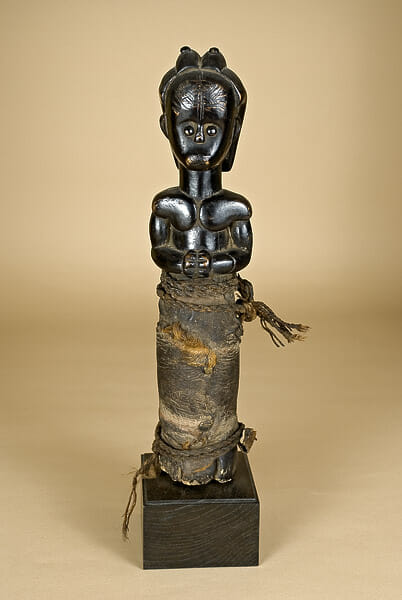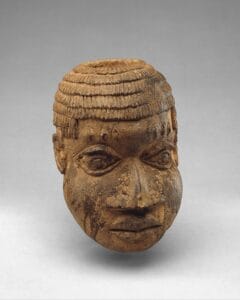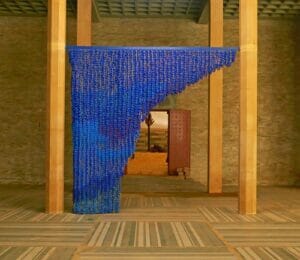The Fang are a major ethnic group of Central and West Africa and form part of the population of Gabon, Equatorial Guinea, and Cameroon.
They produce monumental anthropomorphic wooden statues, used for ritual purposes, with an aesthetic that was admired from the late nineteenth century onwards by such famous modern artists as Pablo Picasso, Georges Braque, and André Derain.
Fang sculptures tend to feature the same materials (wood, bamboo, plant fibers, engraved metal elements) and show a certain stylistic unity, but geographical trends are identifiable despite the diversity of local variants. The style of the northern Fang can thus be distinguished from that of their southern kin.
The northern Fang: the Ngumba and Ntumu groups
The main distinguishing feature of this group is probably the elongated form of its sculpture. The verticality of the figure is reinforced by a cylindrical torso. There is a gap between the often slender but muscular arms and the trunk with its prominent navel. The head of a statue carved by a Ngumba sculptor is generally large and round, with a protruding forehead and sunken cheeks in a heart-shaped face, large round or diamond-shaped eyes with tinplate glass pupils, and an oval or rectangular mouth with fine lips stretched forward, as if pouting, to reveal pointed teeth.
Stylized anatomical details and metal inlays symbolizing scarifications are common features of northern Fang sculpture, as are certain powerfully symbolic disproportionate elements: the head is the seat of vitality, the navel is the link between generations, and the hands convey a sense of profound respect for the dead.
These sculptures, often used as Byeri reliquary figures, stand between 30 and 50 cm tall and sometimes contain teeth.

The southern Fang: the admirable classicism of the Betsi group
The anthropomorphic sculptures of the southern Fang are massive forms made up of three main volumes (head, torso, and legs). They are distinguished in particular by a deep black patina on a light wood. French ethnologist Louis Perrois gave what is probably the best definition of this classical African art, observing that the Betsi style is a splendid combination of “the fullness of the flesh” and “the absolute simplicity of surfaces.”
A striking embodiment of grace and power and an expression of ancestral power, the Black Venus (Fondation Dapper, Paris) sits serenely, her impressive head crowned by a carefully braided coiffure. Sculptures of heads, which share the same aesthetic quality, are also symbolic representations of the ancestors. They are less common than full-length figures but show the same stylistic features—except that they are intended to be seen from the front: the face is carved in the round, while the back of the head is flat.

The faces of southern Fang statues always correspond to a finely balanced stylistic harmony: a rounded bulging forehead, a more or less triangular, heart-shaped face with hollow cheeks, and eyes made of coffee beans or embellished with brass. The face curves inward at the mouth, which is fine and slightly prominent.
What you need to know about Fang statuary
An ethno-morphological approach should be taken to Fang statuary, to perceive its formal structures, proportions, and details. Contextual data, when available, can help determine the provenance, age, and ritual purpose of the desired piece.
To learn more
Although published in 1972, Louis Perrois’s book La statuaire Fang, Gabon is still a reference work on the sculpture of this ethnic group.
Louis Perrois and Marta Sierra Delage, The Art of Equatorial Guinea: The Fang Tribes, Rizzoli International Publications, 1991



